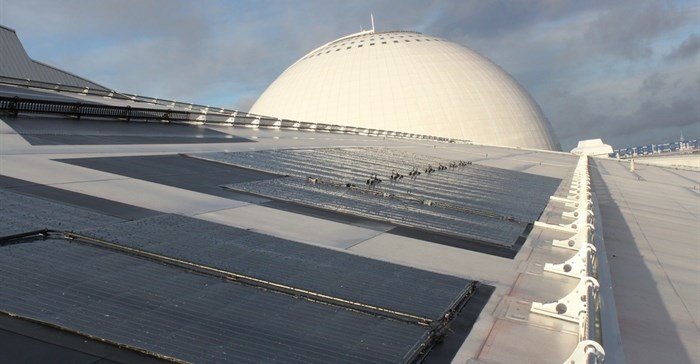
Top stories


Marketing & MediaCammy Msimango on finding her footing in South Africa’s fast-moving digital newsroom
Esther Tomorrow, MDNTV 1 hour




More news







Very few observers were able to foresee the strong growth in PV renewable energy, and solar energy is now very competitive with non-renewable energy sources, even without subsidies.
Large-scale silicon (Si) producers have contributed to most of the growth in PV, but still the margins have remained at disappointing levels, while very few thin-film producers have survived the price pressure and almost all have been wiped off the map.
So, is the conclusion that, just as Si, thin film has to be at large scale to be competitive? And why did so few companies manage to scale up their production capacity and process?
First, let us look at what problem all thin-film producers has been facing and how they have been handled. I believe that most companies failed on technology rather than market conditions. The problem is that researchers have been chasing world records on smaller and smaller substrate areas. For researchers this makes sense when trying to understand basic material properties, but for large-scale production this has very little relevance.

If you try to make the best micro-cell in the laboratory and then scale that process up to module size you will face a mountain of problems, and costs will override any budget. I think the supersize model is not the way to scale production.
If you have a small substrate, you also have small and relatively inexpensive equipment. This also means that you can start from small scale and grow with the market. The ability to reach mass production capabilities, while maintaining the ability to scale (by adding multiple identical production lines) is key when developing profitable niche markets.
The development of PV implementation looks almost identical in all markets.
Segment 1: First you have the off-grid products on a small scale. Products are quite expensive, but still a better alternative than diesel generators or extra battery capacity.
Segment 2: Governments then throw subsidies at grid-connected systems in various ways, enabling a very fast capacity expansion that mostly end up in large solar parks. This usually results in grid restraints, loud complaints from grid owners and utility companies that see their market positions and profits eroding.
Segment 3: PV on roofs is where you utilise the true strengths of PV as the electricity is generated where and when it is consumed. In most populated countries, PV is the only natural choice.
For segment 3, there is an increasing demand for lightweight modules that can be installed on any roof without weight constraints. This is where I see a huge market that eventually will be much bigger than the PV parks. Most factory roofs cannot take the load of heavy Si or glass-glass modules without reinforcement. Here, lightweight flexible modules benefit as they are easy to install and even though more expensive than Si, the total balance of systems (BoS) cost usually works out lower than Si.
There is also a segment 4, namely BIPV (building-integrated PV). Until now, roof-top installations are more or less aesthetic add-ons that are placed on top of existing building materials. The future is to integrate PV into roofing materials and facades at the factory where those building materials are manufactured. The EU is enforcing new building regulations that require all buildings to be zero-energy buildings from 2020. The only feasible way of doing this is through BIPV.
So are building material suppliers adapting to this change? No, not at all. Companies in Europe and US are too afraid to step outside their core business. So to solve the zero-energy requirements, insulating manufacturers are hoping to add more insulating materials, ventilation companies are hoping to add more ventilation and heat exchange equipment and, companies making heat pumps are hoping to add more heat pumps.
However, very few companies see the benefit of combining technologies to find new solutions. This is a huge opportunity for visionary companies not only to explore the European and US PV market, but to enable a strong foothold into the multi-billion dollar building material market in both regions.
There has been talk about BIPV for many years, but the market has not really matured. This is because the right products have been missing. There has been a lot of focus on replacing windows with thin film made on glass. This makes no sense. If you put a window in a building you do it because you want to let sunshine in or you want to look outside. If you replace that window with a PV module that is supposed to absorb sunshine you also remove the function of the window. Roofs and facades usually take up a lot more space on a building and make a much better target for BIPV.
If you want a well-integrated product into roofs or facades it has to be lightweight, durable and also flexible enough to adapt to the architects vision.
In conclusion, silicon solar cells will continue to have a dominant but not so profitable role in the large scale solar park segment. Thin film will find profitable niches in small scale off-grid products and PV on roofs and facades will provide a huge market that will eventually outgrow large PV parks.